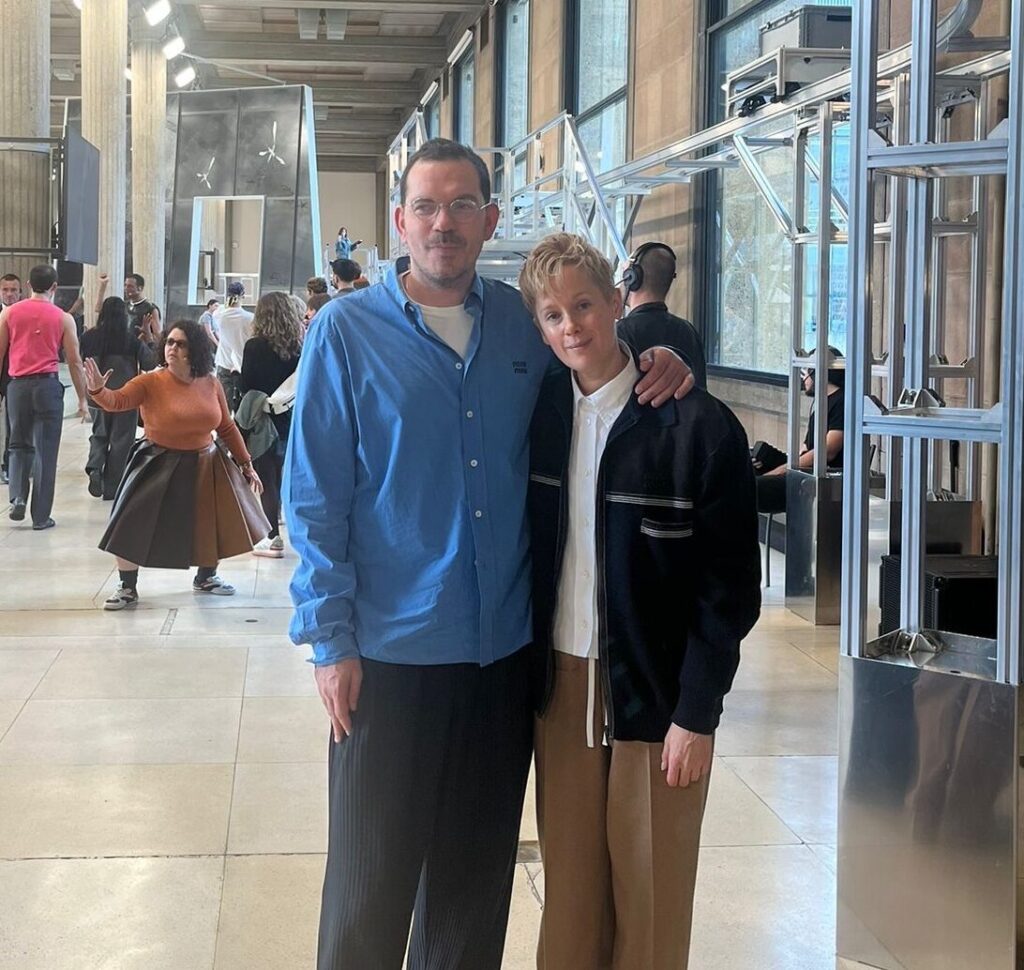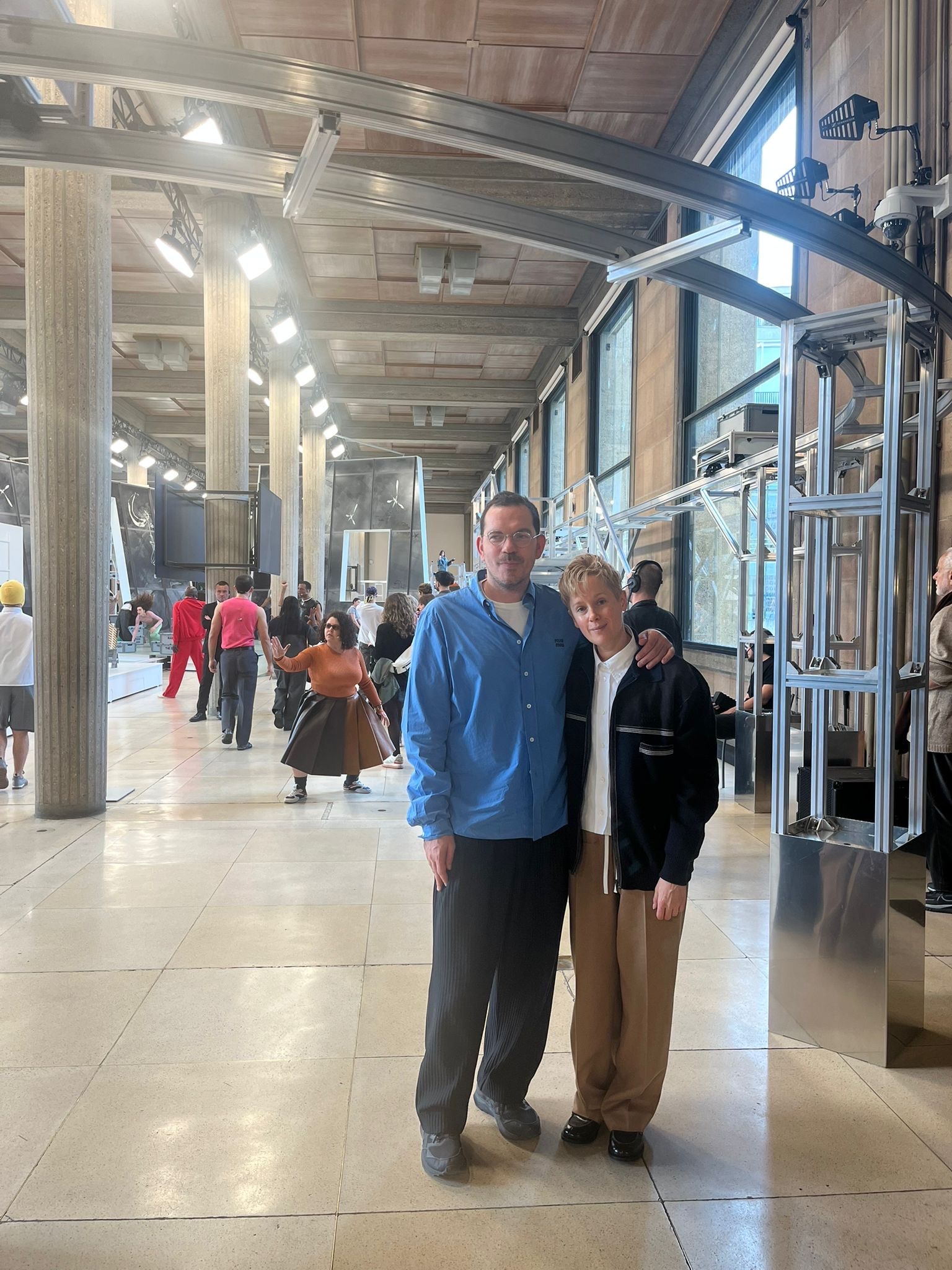
Fabio Cherstich and Helen Marten. Photos courtesy of Fabio Cherstich.
At the Palais d’Iéna in Paris, Miu Miu unveiled 30 Blizzards, a new performance work by artist Helen Marten that blurs the boundaries between sculpture, theatre, and weather report. Conceived with theatre and opera director Fabio Cherstich and composer Beatrice Dillon, the piece, which debuted Tuesday during Art Basel, transforms the neoclassical halls of the Palais into a space that feels like a Pokémon battle arena. It’s part opera, part hallucination, and a total Miuccia Prada fever dream: ironic, intellectual, and feminine chaos in motion. Over Zoom, I spoke with Cherstich between rehearsals about the art of staging the storm, Mrs. Prada, and why Björk would make the ultimate operatic diva.
———
MITCHELL NUGENT: I’m going to hit record now.
CHERSTICH: It was such a challenge, and it was so risky that we were really worried yesterday. But finally, we can say we are very, very happy. It was incredible, working with Helen and Beatrice and my choreographer Riccardo [Olivier], and my stage manager, Sunhye [Won] so intensely for one week. It was rock and roll. The casting is special because we have opera singers, pop singers, jazz singers, actors, actresses, dancers. It’s really Helen’s world, actually.
NUGENT: A world of rock stars. It sounds amazing, I’m so sad I missed it.
CHERSTICH: It’s such a pity that you’re not with us.
NUGENT: When Helen first approached you with the concept, what did you think?
CHERSTICH: When Helen first mentioned 30 Blizzards, I understood that it wasn’t a title, but more a system that would generate its own climate. From the beginning I felt this project would not ask for direction in the traditional sense, but for the construction of conditions: A space where words, sounds, and movement could coexist without subordination, each with equal strength. What we decided to build together wasn’t a spectacle, but more a sort of living organism–open, unstable, and constantly shifting its form. The performance is more like a weather system than a simple narrative, even if we are telling a story.
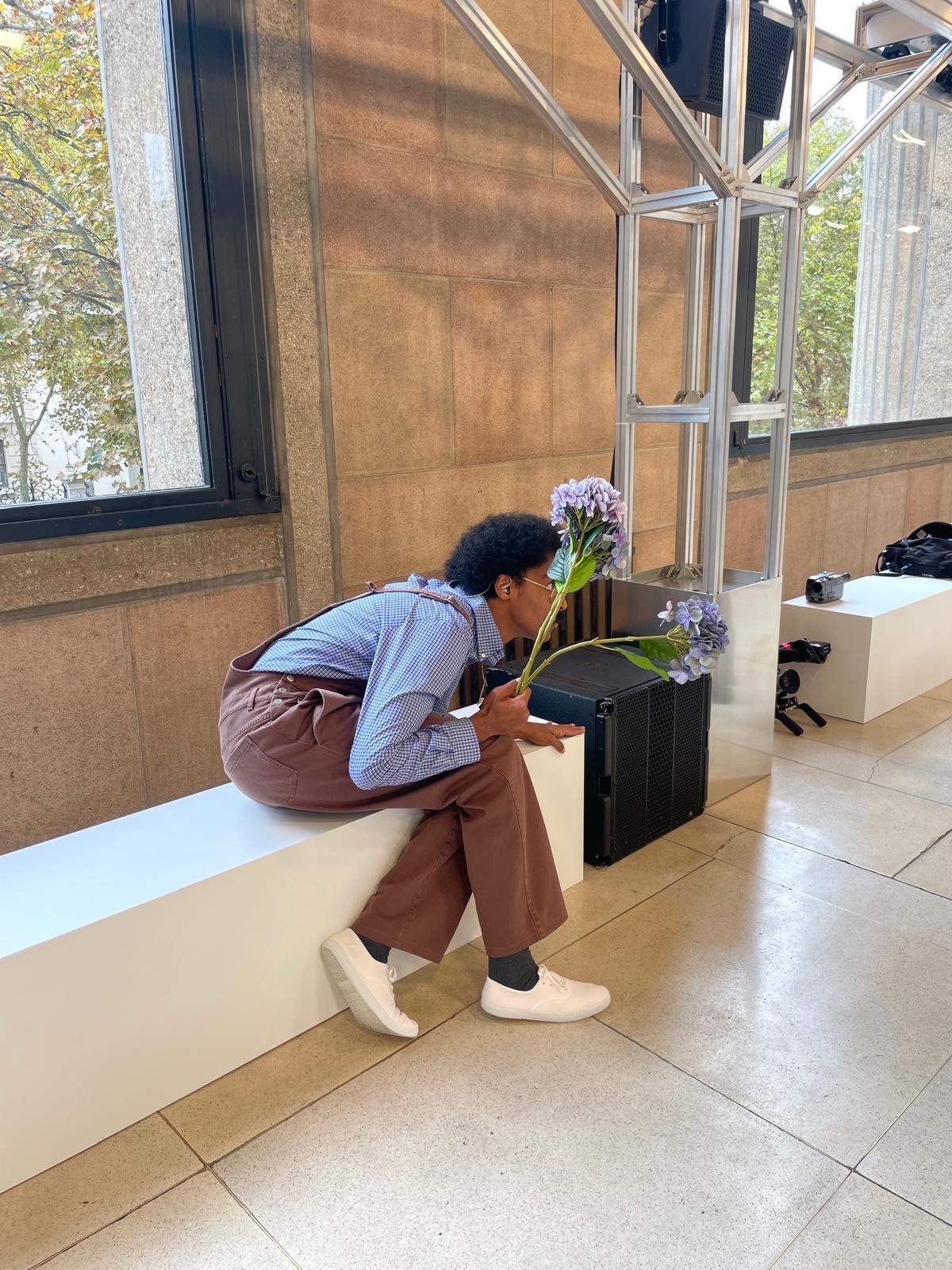
NUGENT: That’s really lovely. I’ve been a fan of your work for a long time, and I see how you can create a book of beautiful essays and photographs and illustrations and paintings as one medium, but then it can also be translated to things like installation or a fashion collection. I think you’re able to challenge what the idea of what we think of art is.
CHERSTICH: You know why? It’s because I love artists. I fell in love with Helen at our first meeting, because she’s an incredible artist. She could work with all the mediums: sculptures, video, installation, works on paper, paintings. Entering her world was pure joy for me. What I’ve done is simply try to stage her vision together with Beatrice and Riccardo and Sanhe. My first intuition while working with her was about words. She’s very poetic and writes very intimately, but with this universal meaning. That’s why I asked her to write a script for our performance.
NUGENT: That’s beautiful. Miu Miu’s world has always been about women performing womanhood with irony, a lot of glamour, and a little wink. So how did that ethos shape your approach when directing the piece?
CHERSTICH: The irony and sensual intelligence of Miu Miu’s world were essential. They allowed us to work with the idea of performing without fixing meaning. For example, treating femininity as a vibration rather than a definition. Helen’s text is full of different characters. There’s mostly women, but we also have voices, echoes, identities, the slides, which also brings the casting to something more contemporary, and more fluid. The performers don’t represent, they embody somehow and they live inside gestures, rhythm silences. And in this sense, the performance of womanhood becomes a metaphor of performing language itself with irony, with some glamour, and a kind of elegant disobedience that is in the spirit of the brand.
NUGENT: And speaking of that elegance and glamour, the space itself I feel like represents those things. What was it like setting the stage at the Palais?
CHERSTICH: The Palais d’Iéna is of course monumental, and it’s the traditional spot for all the Miu Miu shows. So the building is already charged with ideology, history, and also a history of the brandT The challenge was not to stage something inside it, but to let the architecture perform also. So we used a lot of the windows, for example, where the characters are looking outside the window. We tried to create a bridge between the internal village, the installation that Helen designed and the real city outside. And with Riccardo Oliver, we approached the movement also as a form of weather–fluid collective or almost meteorological, trying to use as much space as possible in the Palais, the huge staircase, the windows, the entrance. In a way, our characters exist as a single individual, but also as a community that moves like birds. A fluid collective in the space, 30 performers shifting like a storm, dissolving and reforming.
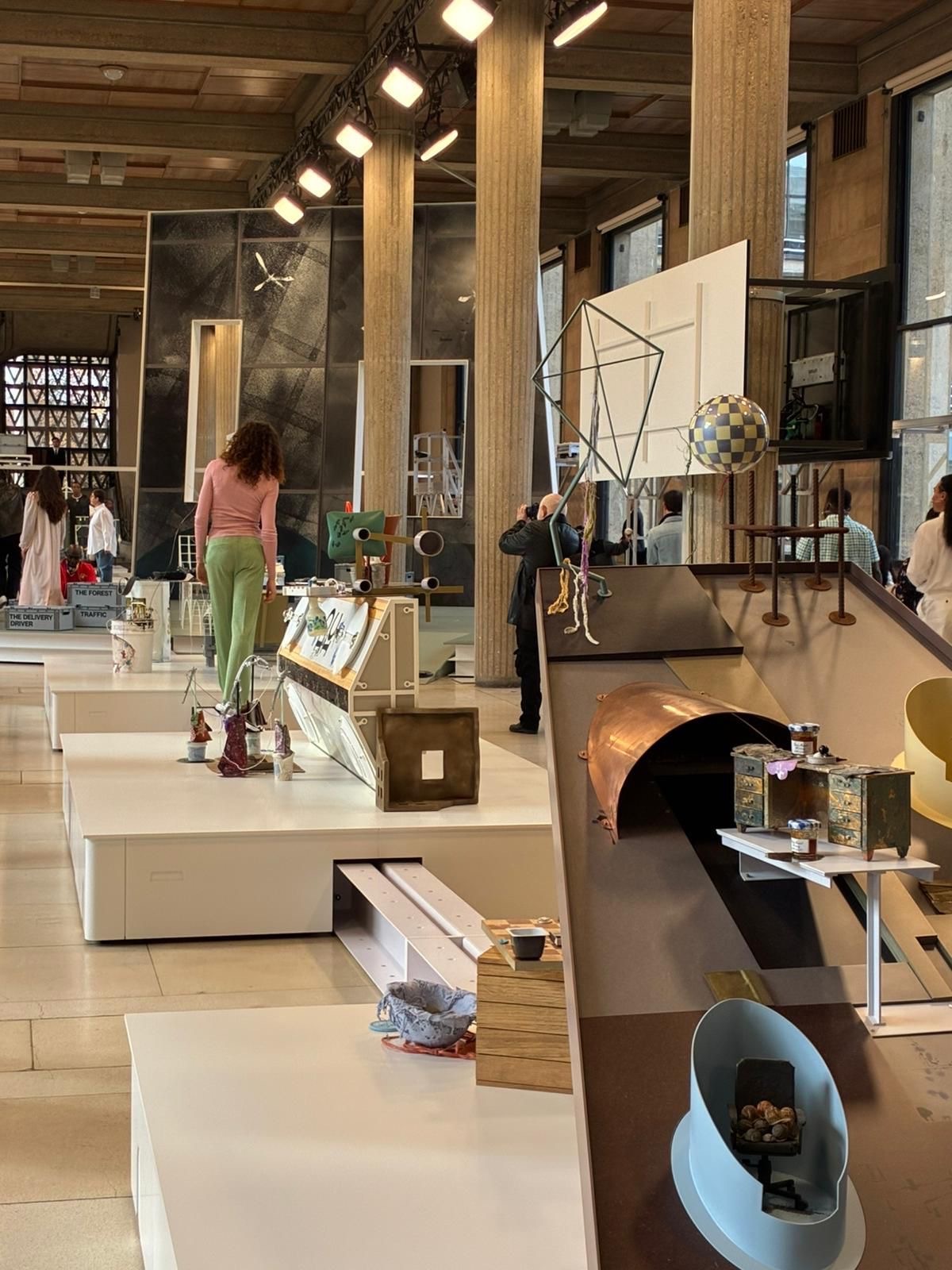
NUGENT: It was very, very dramatic, with a lot of emotion. You’re coming from the world of opera and it sounds like you’re thrilled to unleash these 30 emotional humans in one room.
CHERSTICH: I mean, opera teaches you to handle intensity and to let emotions exceed their frame in a way. In 30 Blizzards, that excess is condensed into presence. Beatrice Dillon is an incredible composer. The score she wrote for the performance really created an atmosphere with a different rhythm, and a different possibility of empathy. Rather than directing emotion to our climax, we wanted to freeze it, to let it pull us quietly beneath the surface. With Riccardo, we shaped the movement more as an emotional choreography. But it’s really important also because the audience is completely surrounded by the artworks, so the performers are all the different spaces of the ballet, which is something that you can’t do when you direct an opera on a stage.
NUGENT: Right. It sounds like such an incredible collaboration with a cast of people that brought this to life. But I’m wondering who was the control freak of the project?
CHERSTICH: Helen Marten, 100%. She knows exactly what she wants and she’s extremely precise. And sometimes with performances you can’t be that precise because it’s about humans. Also, my choreographer, Riccardo Oliver is also a total control freak. I was very lucky to work with him.
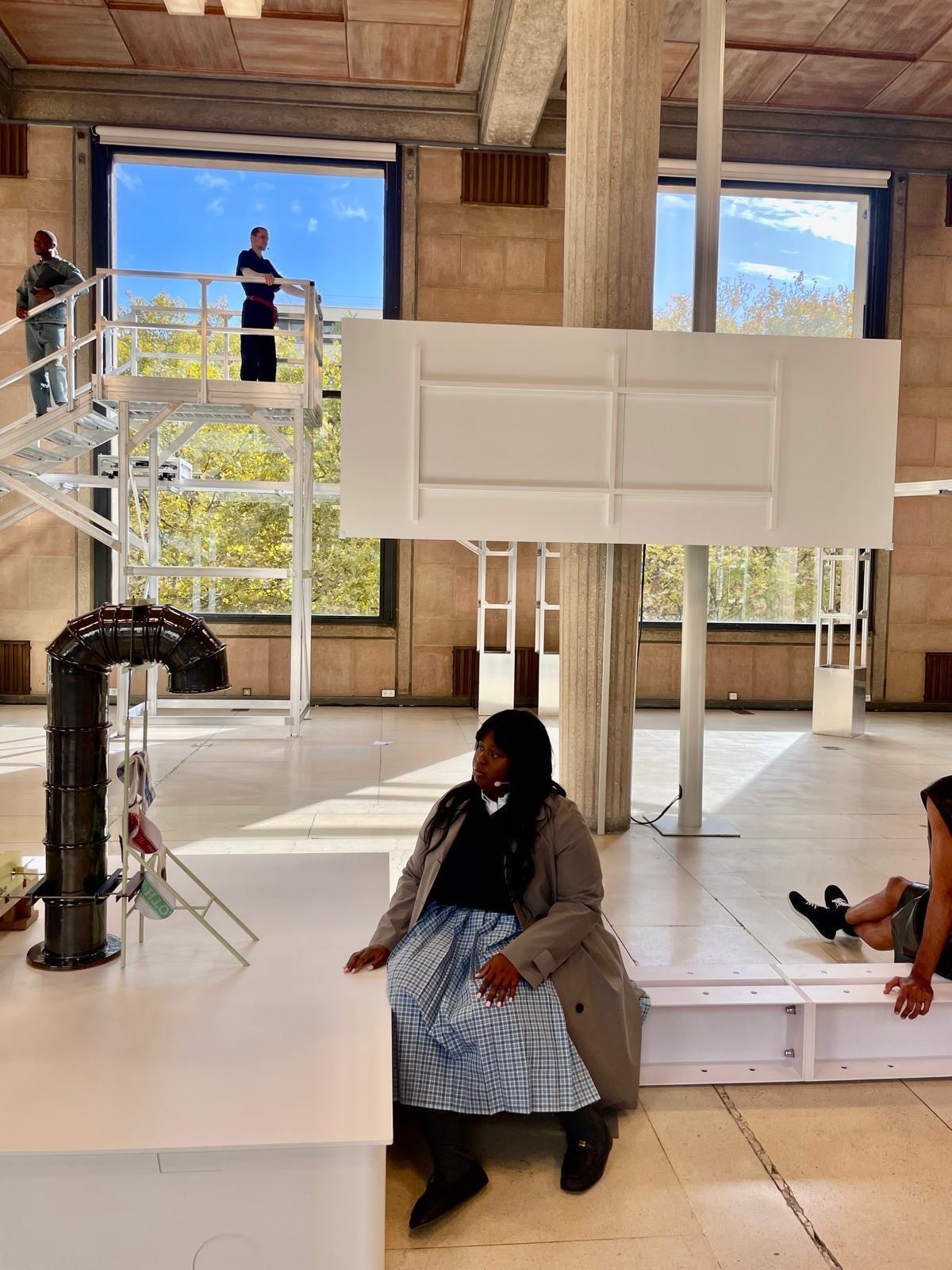
NUGENT: Precision makes perfection. Was there a vocabulary that you invented together, working on this project?
CHERSTICH: Absolutely. In a way it doesn’t tell a story in the traditional sense. It’s more a parabola, as we say in Italy. It’s based on a text by Helen that functions as the main architecture, and then Beatrice composed the music. We have five videos with five characters, with five stories and five scenes that follow the video. When I first saw the project, it was already very detailed with all the list of the characters. The space was already more than sketched. The render was already exactly what the people are seeing now. So in Helen’s mind, everything was super clear. But my closest literary reference in all this was Georges Perec, who is my obsession, and is an author that Helen loves a lot. And in Perec, there is an obsession with lists, with repetition, with the idea that meaning is born from combination and variation. And in La Vie mode d’emploi, every room tells its own story, and each performer here is a fragment of a wider system, a variable within a shifting equation. Each scene is like a room you enter in a world, which is always the world of balance, by the way.
NUGENT: Speaking of characters, each one carries a tool and it’s an object that defines their role. If you were one of the 30, which one would you be?
CHERSTICH: I love the fox. I also love traffic character because they have a metronome, which is one of my favorite objects on stage. I do like the oracle a lot, which has these things that you use when you want to call the birds. There’s also another character that I love that has this fantastic rosemary branch that she’s constantly giving to the audience to smell. You start to see that there’s also something quite simple and sensual in these objects and in these characters.
NUGENT: Miuccia Prada’s universe is all about layering history, irony, politics, and beauty. Did you see parallels between Miuccia’s fashion storytelling and the drama in this piece?
CHERSTICH: I think that Ms. Prada’s method, which is layering opposites and letting irony coexist with seriousness, can be considered close to our dramaturgy in a way, because in each scene is built on contrast: The sacred and the banal, the intimate and the spectacular, the individual and the collective. So beauty here is never decorative, but it’s always built on a strong concept. In a way, Ms. Prada’s language, the piece speaks of history through materials like objects, gestures, fragments, and it’s never through illustration.
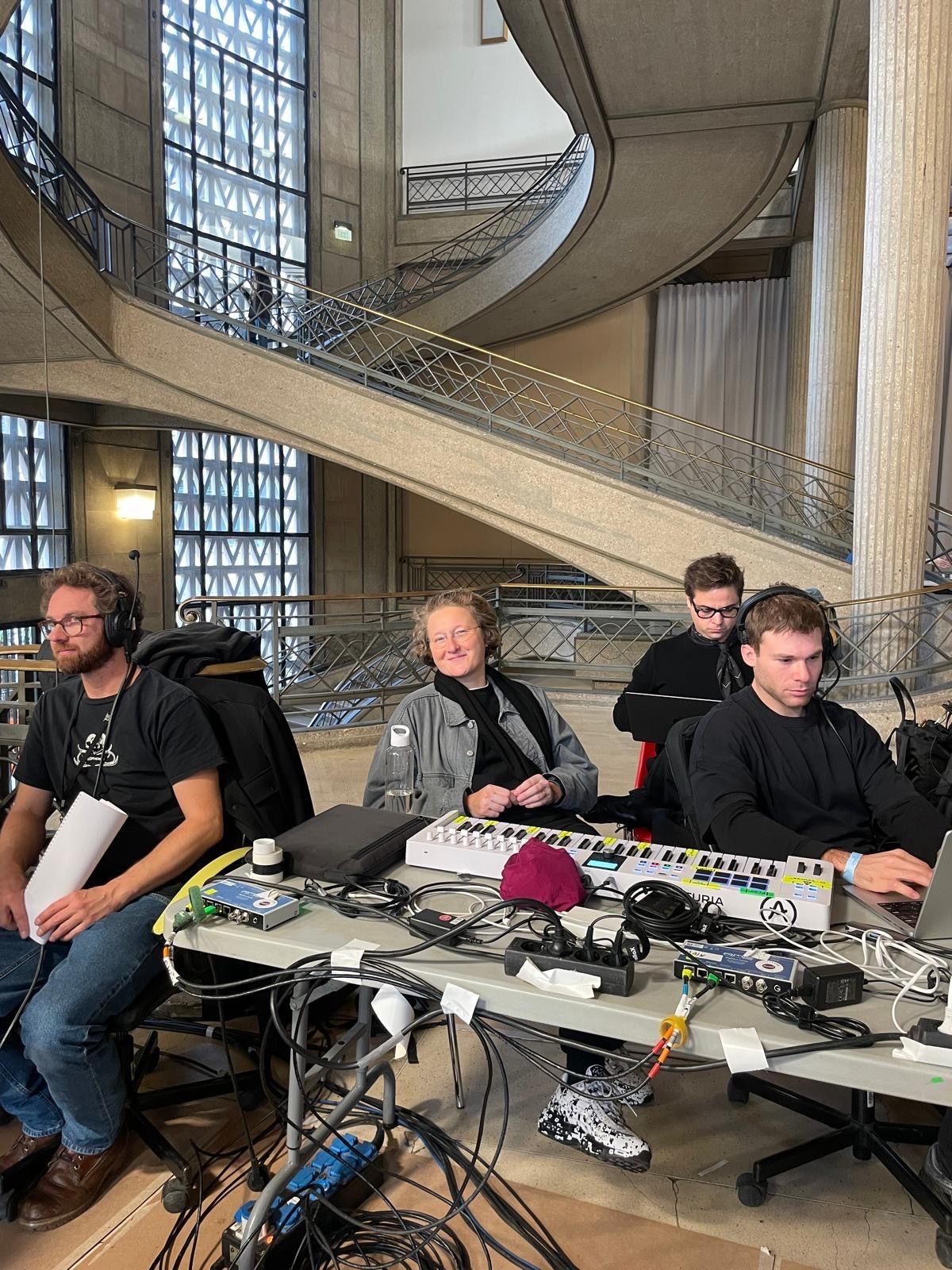
NUGENT: It’s like a perfect extension of the Miu Miu universe. It feels very natural.
CHERSTICH: I mean, Miuccia Prada commissioned the project and had the idea of asking a visual artist to work on this dimension. It’s not an exhibition, it’s not a theater play, it’s not an opera, it’s a project, it’s more complex than just a show.
NUGENT: Of course. And what do you want people to feel when they step into that blizzard that you all created together?
CHERSTICH: We want the audience to feel that they are entering in a system already in motion, not watching something being to lose orientation gently–to be absorbed in an atmosphere rather than the narrative. I think that 30 Blizzards is not something to understand, it’s more something that you inhabit. And the theater’s power, for me, still lies in showing real bodies. I think that people stand still in front of you in a time where everything can be replicated and streamed, it’s almost a radical act of sharing a space together, seeing real bodies in front of real bodies. This is an incredible form of communication, especially today.
NUGENT: Of course. I think the immediacy of it is the most special. And making people react and feeling like there’s 30 different performers and different emotions through these characters. The people watching are all going to feel a different way, and I think that’s really special. One person’s crying, one person’s leaving the room.
CHERSTICH: Yes, of course. But with theater, you need to assume your responsibility. When COVID came, as a theater person I was very worried. They started to do theater on YouTube, and of course a lot of people were sending horrible comments because they weren’t in front of them on a stage. If you want to complain about a show, you need to show your face, your body to stand up and to say, “Boo, boo, boo, shame on you.” You need to assume the responsibility. The people performing put themselves in front of you, and they also assume responsibility. I think that ethically speaking is still a very powerful space, the live dimensions of things that happen between bodies.
NUGENT: That’s beautiful. If Mrs. Prada suddenly decided to commission a full opera, what would you call it? And who would you cast as the diva?
CHERSTICH: Oh my god. I think it’s a little bit too complicated, actually.
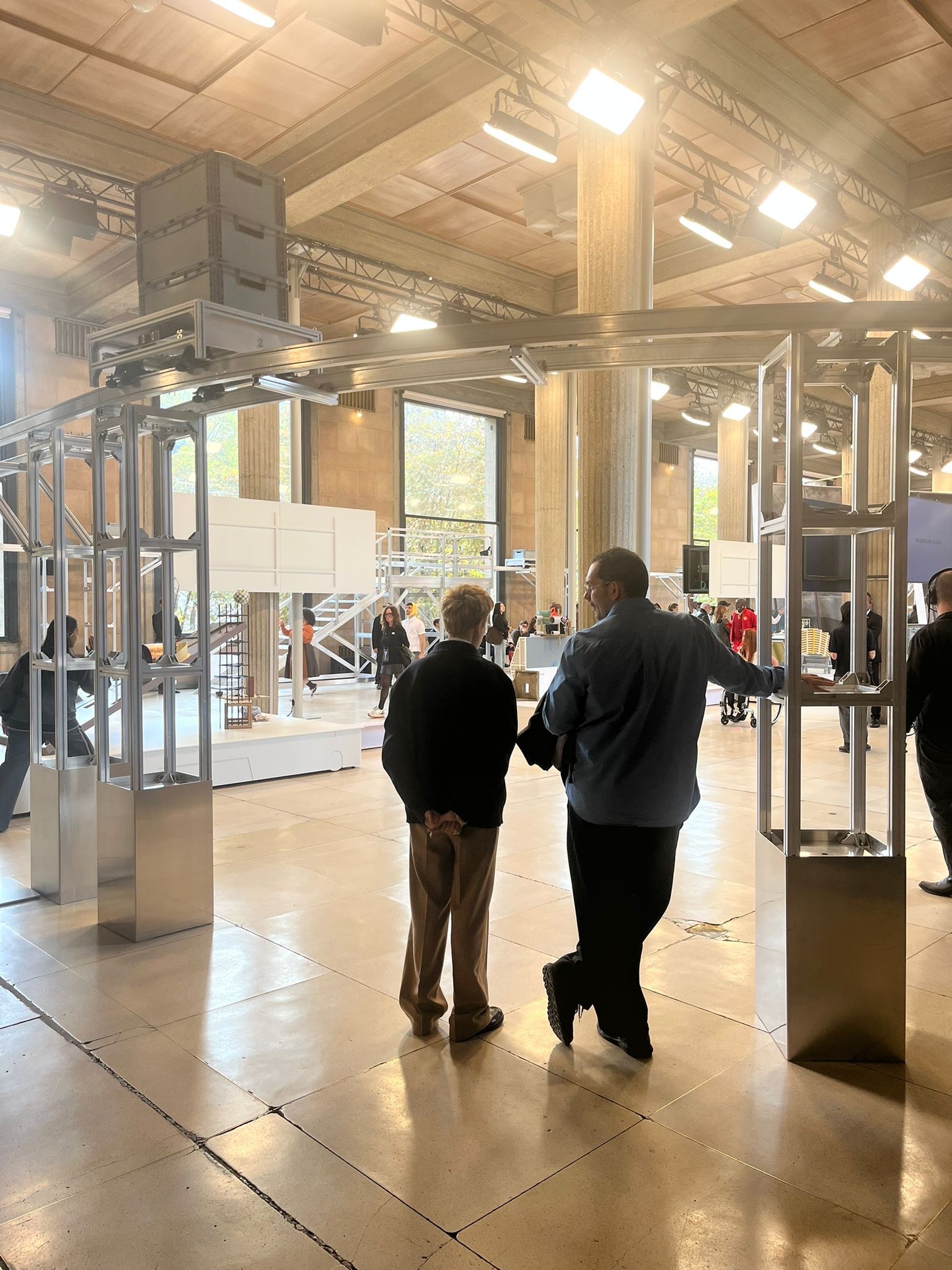
NUGENT: As all good things are.
CHERSTICH: Maybe the diva could be Björk, because she’s someone capable of turning sound into architecture, emotion into design. Because opera for me is not a form, but it’s a state of matter in a way, a temperature. I think that Miuccia Prada could understand it perfectly. So Björk, or Anohni. Why not?
NUGENT: Miuccia and Björk would be my dream.
CHERSTICH: Of course. A complete dream. But the title, I have no idea.
NUGENT: TBD.
CHERSTICH: TBD. But yes, I’m a big fan of Björk. I love her. My God.
NUGENT: As am I. She’s totally outrageous and the most fabulous person on Earth.
CHERSTICH: Also, the DJ sets are beyond. But I was listening to Debut, the album. It’s 1993, I was shocked. The album is still so incredible. I love her 100%.
NUGENT: Well, on that note, it was so lovely to speak to you. I’m sure you’re feeling 30 different emotions right now and need to get back to work.
CHERSTICH: Yes. I need to go. I want to see the run through right now because they’re performing.
NUGENT: Good luck to you. I appreciate it.
CHERSTICH: Thank you so much. Thank you.
NUGENT: I’m sure I’ll see you on the other side of the pond.
CHERSTICH: Super.
NUGENT: Ciao.
CHERSTICH: Ciao, Mitchell.

